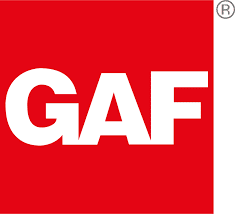Living in Colorado is a dream for many, with its breathtaking scenery and vibrant lifestyle. However, the state’s majestic mountains and diverse weather patterns also present unique challenges for homeowners, especially when it comes to protecting their roofs. Hailstorms, heavy snowfall, and intense winds can wreak havoc on roofing systems, making roof insurance a crucial investment for Colorado residents.
In this comprehensive guide, we will delve into the specifics of how roof insurance claims work in Colorado, covering everything from the types of policies available to the steps involved in filing a successful claim.
The Significance of Roof Insurance in Colorado
Colorado’s diverse climate, with its mix of sunny days and severe weather, can take a toll on your roof. Hailstorms, heavy snowfall, and sudden temperature fluctuations are common culprits for roof damage. In fact, Colorado consistently ranks among the states with the highest number of insurance claims related to roof damage. Having the right roof insurance policy can provide peace of mind and financial protection for homeowners in the state.
When it comes to residential and commercial roof insurance claims in Colorado, the process can oftentimes be confusing and lengthy. If it’s not bad enough that you have to deal with damage to your home that can lead to rainwater leaking through the ceiling and all kinds of other problems… you also have to figure out how to work with your insurance company.
Here is a comprehensive guide to help explain how roof insurance claims work.
Types of Roof Insurance Policies
In Colorado, roof insurance policies come in various forms, each tailored to meet specific homeowner needs. These include the following:
- Basic policies: These typically cover sudden and accidental damage from events like hail storms or windstorms.
- Comprehensive coverage: This offers broader protection against various perils, including wear and tear, aging, and even damage from falling objects.
- Additional endorsements: These can further extend your coverage for specific issues like ice dams, mold, or animal damage.
It’s essential to understand the differences in coverage to choose a policy that aligns with your specific needs. While basic policies may cover common perils, comprehensive coverage can offer protection against a broader range of risks, ensuring your roof is safeguarded in various scenarios.
Also consider factors like the age and condition of your roof, your location within the state, and your budget. Consulting with a reputable insurance agent can help you make an informed decision.
Policyholder Responsibilities
Homeowners and business owners in Colorado bear essential responsibilities when it comes to the maintenance and care of their roofs. Regular inspections, prompt repairs, and responsible maintenance are not merely good practices but also critical duties outlined in most insurance policies.
Neglecting these responsibilities could jeopardize your insurance coverage, so it is paramount to remain proactive in maintaining your roof. This not only prolongs the life of your roof but also ensures the validity of your insurance coverage when you need it most. Taking these proactive steps can also help prevent major damage, potentially avoiding the need to file a claim in the first place.
Filing a Roof Insurance Claim
Filing a roof insurance claim is the pivotal first step towards restoring your damaged roof. The process begins by contacting your insurance company promptly after the damage occurs. Here is a general guide of the steps involved in filing a successful roof insurance claim in Colorado:
- Contact Your Insurance Company: Reach out to your insurance company as soon as you discover roof damage. Notify them of the situation and provide essential details such as your policy number and the date of the damage.
- Document the Damage: Take photographs of the damaged areas from multiple angles. Keep detailed notes describing the extent of the damage and any visible signs. Also try to collect any relevant documents, including your insurance policy and contact information for roofing contractors you may want to engage.
- Request an Inspection: Your insurance company will assign an adjuster to inspect the damage. Schedule an inspection with the adjuster to evaluate the extent of the roof damage.
- Meet with the Adjuster: During the inspection, cooperate fully with the adjuster, providing them access to your property and answering any questions they may have. Be prepared to discuss the circumstances surrounding the damage.
- Provide Documentation: Present the documentation you’ve gathered to the adjuster during the inspection. Share the photographs, notes, and estimates from roofing contractors to support your claim.
- Review Your Policy: Familiarize yourself with the details of your insurance policy, including coverage limits and deductibles. Ensure you understand the terms and conditions that may affect your claim.
- Await the Adjuster’s Assessment: The adjuster will assess the damage and determine if it falls within the scope of your policy’s coverage. They will prepare a report detailing their findings and the estimated cost of repairs or replacement.
- Claim Approval or Denial: Your insurance company will review the adjuster’s report to decide whether to approve or deny your claim. If approved, they will provide guidance on the next steps for repairs or replacement. In the event of a denial, you have the option to appeal the decision.
The process can sound intimidating, but you don’t need to go it alone. Please reach out to our team so we can walk alongside you every step of the way.
Claim Approval and Denial
To elaborate on that last bullet point, when it comes to approving or denying a roof insurance claim, insurance companies evaluate several factors. Common reasons for claim denials can include:
- Policy coverage: Make sure the damage falls within the scope of your policy.
- Evidence of cause: Clearly demonstrate that the damage was caused by a covered peril.
- Roof maintenance history: A well-maintained roof is less likely to be denied coverage.
- Claim history: A history of frequent claims may raise red flags.
If your claim is denied, you have the option to appeal the decision. It is advisable to consult with your insurance company or seek legal guidance for a successful appeal. An experienced attorney can help you navigate the complexities of the appeals process and advocate for your rights as a policyholder.
The Repair or Replacement Process
Once your roof insurance claim is approved, you can proceed with the repair or replacement process. Choosing a reputable roofing contractor with experience in handling insurance claims is essential. You should discuss the scope of the work with the contractor and ensure they understand the specific requirements outlined in your insurance policy. Your insurance company will work with the roofing contractor to coordinate payment, ensuring that your roof is restored to its pre-damaged condition.
Deductibles and Cost Sharing
Understanding deductibles is essential in the roof insurance claims process. The deductible is the amount you must pay out of pocket before your insurance coverage kicks in. The specific deductible amount can vary depending on your policy, and it may be either a set dollar amount or a percentage of the total claim value.
It is crucial to be aware of your deductible and how it affects your overall costs. Discuss the deductible with your insurance company to understand how it factors into your budget when planning for repairs or replacement.
Common Mistakes to Avoid
Avoiding these common mistakes during the roof insurance claims process can significantly improve your chances of a successful outcome:
- Neglecting regular roof maintenance and inspections, which may lead to the denial of your claim due to negligence.
- Waiting too long to file a claim after damage occurs. Prompt reporting of damage can expedite the claims process.
- Failing to thoroughly understand your insurance policy and coverage limits. Be aware of any exclusions or limitations in your policy.
- Not cooperating fully with the insurance adjuster during the inspection, as this can lead to an inaccurate assessment.
- Not seeking professional advice when dealing with claim denials. An experienced attorney can help you navigate the appeals process and protect your rights as a policyholder.”
Final Thoughts
Navigating roof insurance claims in Colorado can be complex, but understanding the process can make all the difference. By being proactive, informed, and taking the necessary steps, homeowners and business owners can weather any storm and secure the protection they deserve. Remember, knowledge is power when it comes to your roof and your peace of mind.
And remember, you do not need to go it alone. With Axe Roofing, you’ll receive a free inspection and a quick, honest estimate. During our inspection, we use trusted, third-party tools such as Xactimate to break down the price of the claim and Eagleview in order to see the size and extent of your roofing damage.
If you have any questions regarding a roofing insurance claim and want to learn more about our roof repair and replacement services, contact Axe Roofing today!
Frequently Asked Questions
Here are a few of the most frequently asked questions we receive on how roof insurance claims work in Colorado. If you still have questions, check out our roofing FAQ page to see if we can help you there!
- Why is there depreciation on my insurance claim?
Depreciation is the amount of money that is held back by the insurance company. This is per item and not on the total claim amount. The depreciation is based on how much life expectancy is left in the damaged item. If something is worth $100 brand new and there is 10% of its life expectancy left, the insurance carrier would pay you 10% of the new price ($10) and hold back 90% ($90). Depending on the policy, the depreciation can be recovered once the work is completed and documentation is sent in. - Why is it essential to have my roof inspected after a major storm or event?
Roofing systems are an integral component of a building. Damage can occur from hail, high winds, and storms. Often to an untrained eye, there looks to be little or no damage. However, if you ignore a roof that needs repair or replacement, it will get worse over time, and cost you more to fix. Additionally, most insurance policies only give you 12 months to file a claim to catch damage early. Hail, in particular, can cause small imperfections that get worse over time. Storm damage isn’t likely to cause leaks immediately, but later, as the roof gets exposed to the elements, leaks start to occur. - What is the difference between RCV vs. ACV?
Insurance coverages often have two different ways of evaluating how much you’ll receive for your roof. One is the replacement cost value (RCV). This is a more traditional type of coverage. The insurer will pay enough to cover the full cost of a roof replacement, minus your deductible. ACV is the actual cash value. This factors in the age of your roof and is more common in states with high wind and hailstorms. You’ll receive the amount of the roof replacement minus deductible and depreciation. - What don’t some roof insurance policies cover?
There are some policies that may not cover wear and tear on an older roof, damage from a neglected maintenance issue, wind and hail exclusions on some policies, and damage caused by not taking immediate action after storms.
Related Articles:














